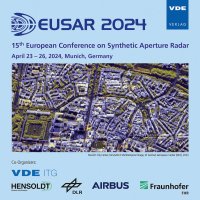Safeguarding the 10-GHz frequency band for high-resolution X-band SAR applications
Conference: EUSAR 2024 - 15th European Conference on Synthetic Aperture Radar
04/23/2024 - 04/26/2024 at Munich, Germany
Proceedings: EUSAR 2024
Pages: 4Language: englishTyp: PDF
Authors:
Lumsdon, Parivash; Emanuelli, Matteo; Ortega Castello, Ines; Janoth, Jürgen; Kaptein, Alexander
Abstract:
In 2015, the International Telecommunication Union (ITU) World Radio Conference (WRC) extended the bandwidth available for civil X-band Synthetic Aperture Radar (SAR) satellites from 600 MHz to 1200 MHz. The objective of such extension was to achieve widespread socio–economic benefits enabling very high-resolution imaging, comparable to electro-optical sensors from space. Airbus and DLR played a significant role in achieving such a result, conducting significant technical studies to justify the utilisation of a higher bandwidth and making sure to establish limitations to protect incumbent services, such as radio-astronomy. On November 2, 2015 WRC-15, decided to extend the frequency band allowed for conducting active Earth Exploration Satellite Services (EESS(Active)), from 9 300 - 9 900 MHz to 9 200 - 10 400 MHz Such identification enables in principle to achieve an imagery resolution as fine as 12.5 cm. [1, 2] However, at WRC-19 International Mobile Telecommunication (IMT) spectrum demands targeted the 10.0-10.5 GHz frequency range. The objective was to identify such a range for terrestrial mobile networks (i.e., 5G) demonstrating incumbent services in band and adjacent (respectively, Earth exploration-satellite service (EESS)(Active) and EESS(Passive)) would not be affected. Official technical studies have been conducted between 2020 and 2023 to verify the possibility of coexistence between the 5G emissions and the SAR receivers. Such studies have shown that 5G deployment would cause significant impact on the performances of spaceborne or aeronautical SAR in all baseline scenarios. This paper examines the importance of protecting the 10-GHz frequency band for SAR applications, highlighting the challenges, the actual effects of 5G into SAR imagery and exploring the solutions to ensure SAR protection for continuing providing reliable and effective benefits for humanity.


